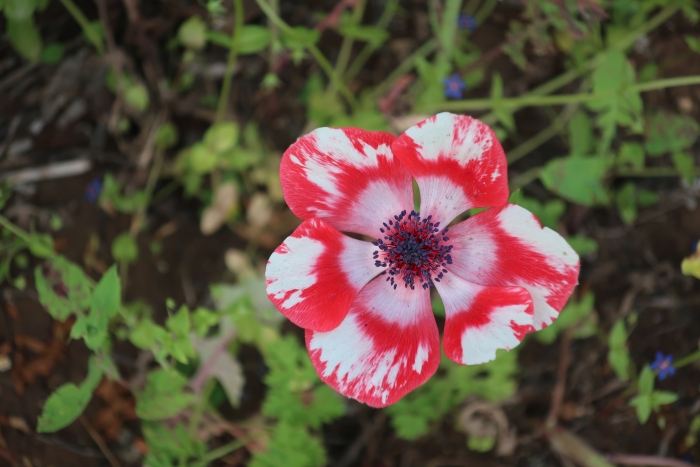Poppy Anemone
(Anemone coronaria)
Poppy Anemone (Anemone coronaria)
/
/

Davidbena
CC BY-SA 4.0
Image By:
Davidbena
Recorded By:
Copyright:
CC BY-SA 4.0
Copyright Notice:
Photo by: Davidbena | License Type: CC BY-SA 4.0 | License URL: https://creativecommons.org/licenses/by-sa/4.0 | Uploader: Davidbena | Publisher: Wikimedia Commons | Title: Anemone_(Red_and_white).jpg | Notes: User created page with UploadWizard |






























































Estimated Native Range
Summary
Anemone coronaria, commonly known as Poppy Anemone, is a deciduous perennial herb native to the Mediterranean region, including Southern Europe, North Africa, and parts of the Middle East. It typically grows to a height of 0.8-2 feet (24-60 cm) and a width of 0.5-0.8 feet (15-24 cm). The plant is admired for its vibrant, cup-shaped flowers that come in a variety of colors including blue, black, yellow, green, pink, purple, red, and white. These blooms appear predominantly in the spring, but under suitable conditions, they can also emerge in summer and even winter. The flowers are particularly showy, making them a favorite among gardeners for their ornamental value.
Poppy Anemone is valued for its striking flowers and is commonly used in border plantings, rock gardens, and as cut flowers due to their long vase life. It thrives in full sun to part shade and requires well-drained soil, preferably sandy or loamy. While it needs regular watering, care should be taken to avoid waterlogging. In cooler climates, A. coronaria is often treated as an annual and grown from tubers. Tubers are planted in the autumn and overwintered in pots within a greenhouse, or planted in the ground in spring after the risk of frost has passed. Despite its beauty, it can be susceptible to pests like aphids and diseases such as powdery mildew.CC BY-SA 4.0
Poppy Anemone is valued for its striking flowers and is commonly used in border plantings, rock gardens, and as cut flowers due to their long vase life. It thrives in full sun to part shade and requires well-drained soil, preferably sandy or loamy. While it needs regular watering, care should be taken to avoid waterlogging. In cooler climates, A. coronaria is often treated as an annual and grown from tubers. Tubers are planted in the autumn and overwintered in pots within a greenhouse, or planted in the ground in spring after the risk of frost has passed. Despite its beauty, it can be susceptible to pests like aphids and diseases such as powdery mildew.CC BY-SA 4.0
Plant Description
- Plant Type: Bulb
- Height: 0.8-1.5 feet
- Width: 0.5-0.8 feet
- Growth Rate: Moderate
- Flower Color: Blue, Pink, Purple, Red, White
- Flowering Season: Spring
- Leaf Retention: Deciduous
Growth Requirements
- Sun: Full Sun, Part Shade
- Water: Medium
- Drainage: Fast
Common Uses
Bee Garden, Bird Garden, Border Plant, Butterfly Garden, Deer Resistant, Drought Tolerant, Groundcover, Low Maintenance, Potted Plant, Rabbit Resistant, Rock Garden, Showy Flowers
Natural Habitat
Native to the Mediterranean region, including Southern Europe, North Africa, and parts of the Middle East
Other Names
Common Names: Lilies-Of-The-Field, Spanish Marigold, Windflower, Zaghleel, Bukettanemon, Kronen-Anemone, Ying Su Cao Yu Mei
Scientific Names: , Anemone coronaria, Anemone rosea, Anemone cyanea, Anemone coccinea, Anemone coronaria var. cyanea, Anemone versicolor, Anemone coronarioides, Anemone coronaria var. coccinea, Anemone nobilis
GBIF Accepted Name: Anemone coronaria L.